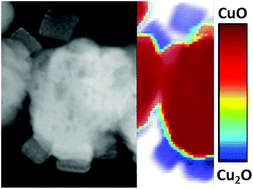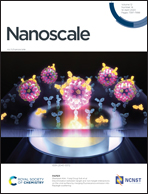How photocorrosion can trick you: a detailed study on low-bandgap Li doped CuO photocathodes for solar hydrogen production†
Abstract
The efficiency of photoelectrochemical tandem cells is still limited by the availability of stable low band gap electrodes. In this work, we report a photocathode based on lithium doped copper(II) oxide, a black p-type semiconductor. Density functional theory calculations with a Hubbard U term show that low concentrations of Li (Li0.03Cu0.97O) lead to an upward shift of the valence band maximum that crosses the Fermi level and results in a p-type semiconductor. Therefore, Li doping emerged as a suitable approach to manipulate the electronic structure of copper oxide based photocathodes. As this material class suffers from instability in water under operating conditions, the recorded photocurrents are repeatedly misinterpreted as hydrogen evolution evidence. We investigated the photocorrosion behavior of LixCu1−xO cathodes in detail and give the first mechanistic study of the fundamental physical process. The reduced copper oxide species were localized by electron energy loss spectroscopy mapping. Cu2O grows as distinct crystallites on the surface of LixCu1−xO instead of forming a dense layer. Additionally, there is no obvious Cu2O gradient inside the films, as Cu2O seems to form on all LixCu1−xO nanocrystals exposed to water. The application of a thin Ti0.8Nb0.2Ox coating by atomic layer deposition and the deposition of a platinum co-catalyst increased the stability of LixCu1−xO against decomposition. These devices showed a stable hydrogen evolution for 15 minutes.



 Please wait while we load your content...
Please wait while we load your content...